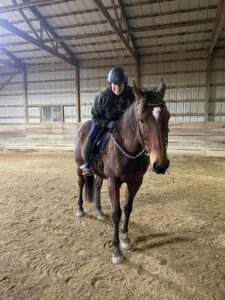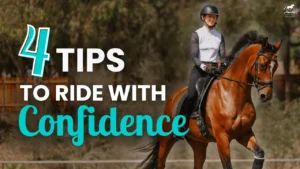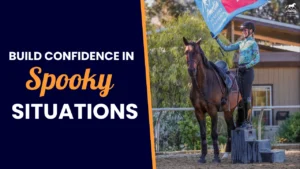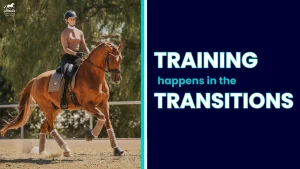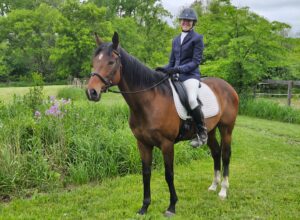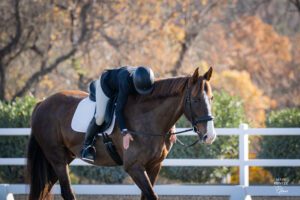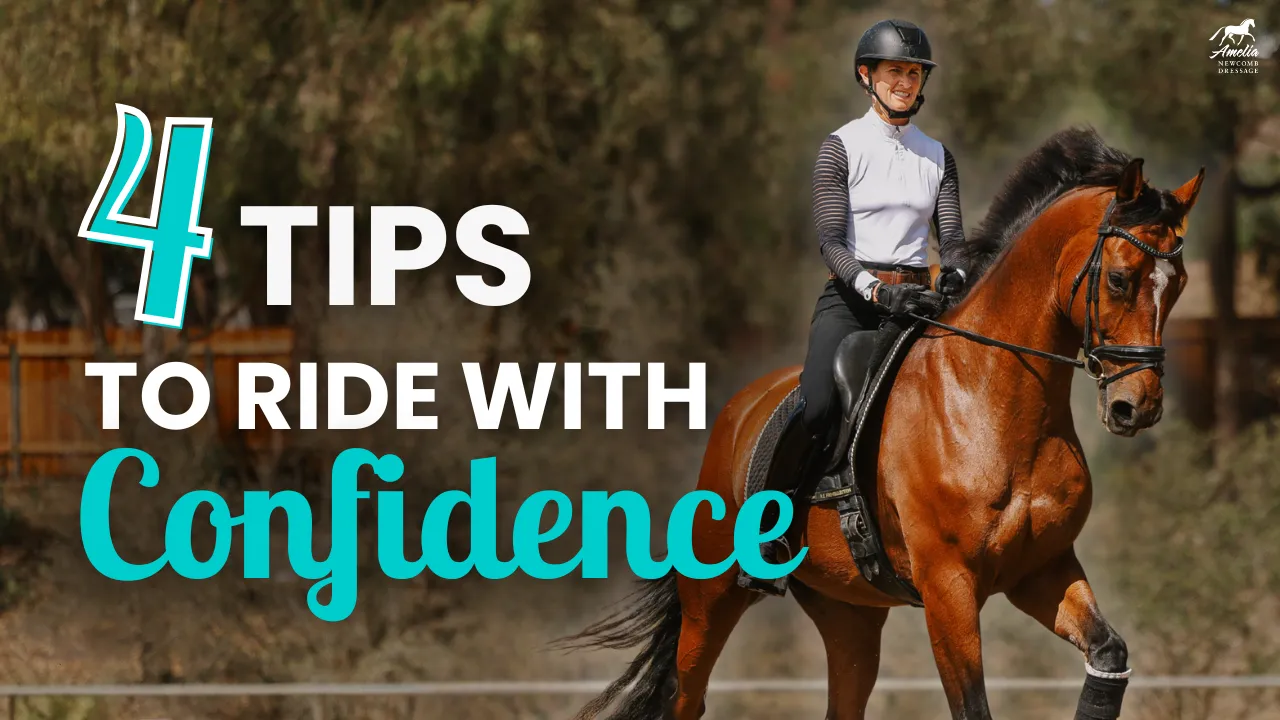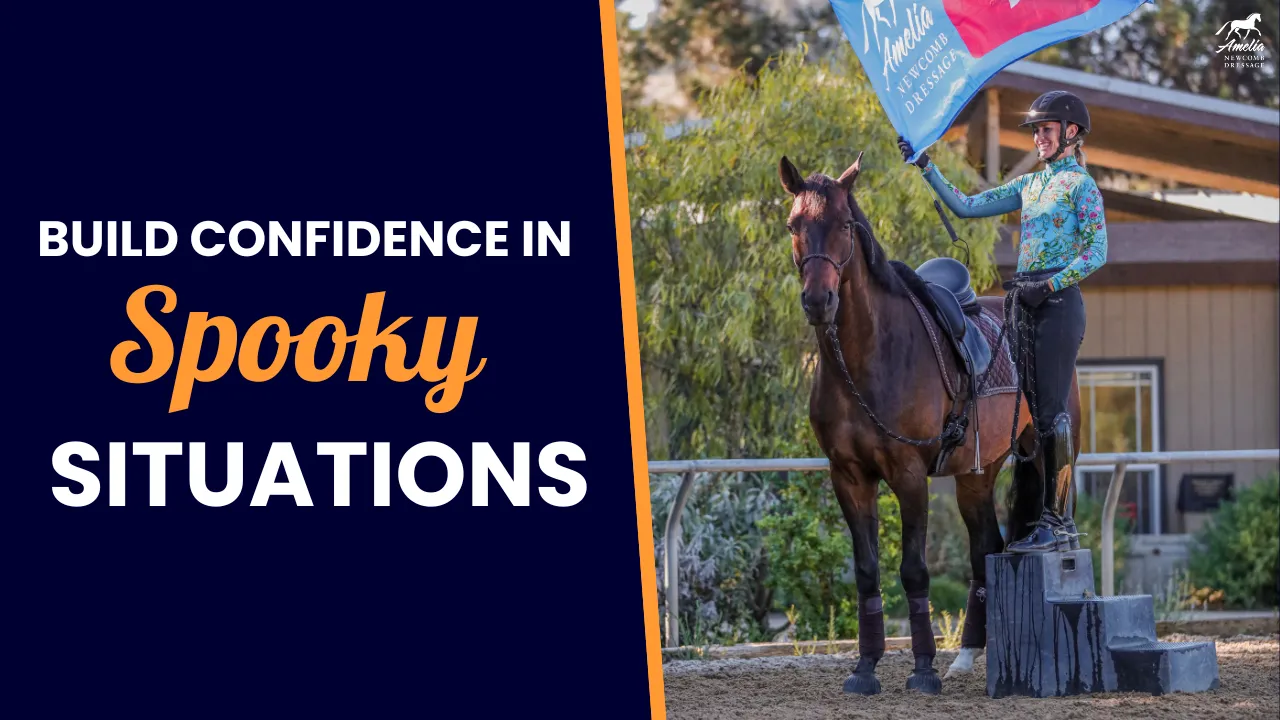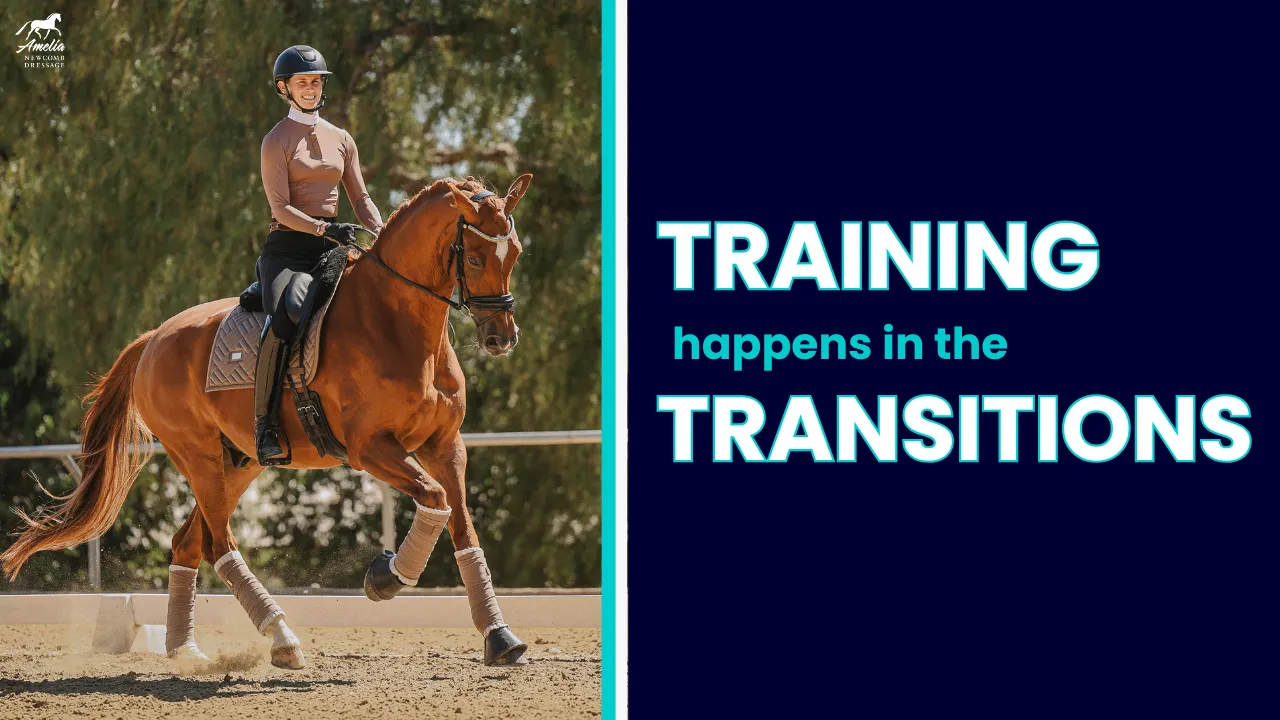Today’s video is about perfecting the walk-canter transition.
First off, when perfecting the walk-to-canter transition, I want to have a nice walk with his poll at the highest point, a little flexion, making sure he’s bending slightly. Then when I ask for the canter, I want him to start with his hind leg and keep his neck exactly the same. I close my leg, ask for the transition, and I want to really feel that the first stride is a clear canter stride. I want to feel his inside hind leg come forward underneath my seat, and I don’t want his head or frame to change.
This is important because the walk-canter transition is the preparation for your flying change. It’s the same aid as the flying change.
Don’t forget that when you’re practicing your transitions, you have to keep the canter good between your transitions.
One of the most common mistakes I see people make in these walk-canter transitions is that their horse doesn’t react, so they lean forward. For example, if I close my leg and he doesn’t react, I see people lean forward to try to get their horse to canter.
To get him to properly canter, I’m not going to change my upper body at all. I’m just going to close my calf, and what I want to feel is that the hind leg comes through and nothing changes in my hand or in his frame.
If you are having trouble with your flying changes, it’s really good to go back and work on your simple changes, your canter-walk-canter transitions. Really perfect these so that they’re right on your seat and that you don’t have to use your reins all the time in the transition.
Happy Riding!
Amelia
